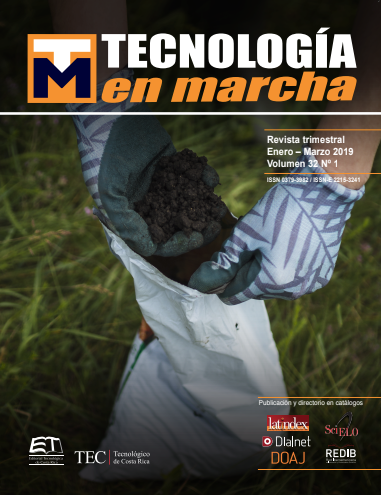Use of pruning in the agricultural management of Jatropha curcas (jatropha) for the plant flower development, in Costa Rica
Main Article Content
Abstract
The species Jatropha curcas (jatropha) is characteristic of the Mesoamerican region, with its center of origin found in Mexico. It has been adapted for its use as hedge rows and also exploited, based on traditional knowledge for medicinal applications. Currently, it is classified as a valuable species for the production of oils; for biofuels or as paint diluents. In Costa Rica, since 2005, studies have been performed to achieve the positive domestication for the use of this species as an agro-energetic crop along with another food crop. However, the crop management processes are still very recent and it is required to deepen in this subject to obtain a crop of a high economic value. At the Estación Fabio Baudrit, a crop was established, using seeds from the Comayagua variety and an assay was established, in which a strict assessment was performed to random blocks, of the plants length in order to execute the first prune at 40 cm. Later, the blocks were also tracked, to evaluate the branches until the flowering and harvesting stages. The yield of green fruits behaved similarly to the inflorescence and the female flower production. The pruned plants did not present a significant difference in terms of fruit yield for the first year; but in the second year, they exceeded the production of the unpruned plants.
Article Details
Los autores conservan los derechos de autor y ceden a la revista el derecho de la primera publicación y pueda editarlo, reproducirlo, distribuirlo, exhibirlo y comunicarlo en el país y en el extranjero mediante medios impresos y electrónicos. Asimismo, asumen el compromiso sobre cualquier litigio o reclamación relacionada con derechos de propiedad intelectual, exonerando de responsabilidad a la Editorial Tecnológica de Costa Rica. Además, se establece que los autores pueden realizar otros acuerdos contractuales independientes y adicionales para la distribución no exclusiva de la versión del artículo publicado en esta revista (p. ej., incluirlo en un repositorio institucional o publicarlo en un libro) siempre que indiquen claramente que el trabajo se publicó por primera vez en esta revista.

